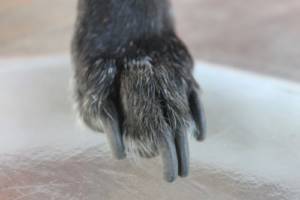Every dog owner has had to deal with the irritation and fright of their lovely companion while making sure they stay clean. One of the most common troubles with dogs is when you want to trim their nails, which they can use to injure themselves or someone else when they’re too excited. As humans, we understand hygiene but a dog cannot be expected to know why their nails need to be cut. They may have their own reasons for being afraid – like the loud noise a clipper makes, or their unfamiliarity with the machine. And so, it becomes tough to convince your little friend to stay calm and help in the 5-minute process.
So, you must know how to sedate or tranquilize your four-legged friend. There are several techniques you can use to sedate dogs, both natural and artificial. These drugs are usually used to help dogs with anxiety and restlessness.
Things to use in order to calm your Dog:
Here is an easy list of things you can use to calm down your dog –
-
Benadryl –
A name you might be familiar with, Benadryl is a common drug prescribed for people suffering from allergies and coughing-fits. It is a lighter drug, hence comes up higher in preference as it would not have any side-effects that could harm the dog in any way. An antihistamine drug, it has a mild sedative effect and helps in calming down anxious dogs.
Most veterinary experts prescribe it for dogs with various types of anxieties like separation anxiety, but a 25mg tablet can help in calming down your pup before you begin with the nail clipping process. It is still recommended to check with your vet before administering Benadryl as it can be harmful to dogs with glaucoma, cardiovascular diseases or even high blood pressure.
-
Melatonin –
Melatonin is another name you might be familiar with, as it is commonly prescribed to people suffering from sleep issues due to its sedative effect. It is commonly available as an over-the-counter drug and it can be used to sedate an anxious pup effectively. Melatonin is generally used for helping animals with overactivity, hair loss and epilepsy, among other usages. Although not yet approved by the FDA for animal use, melatonin is still used by veterinarians due to the very few side effects it has.

This easily available drug aids in easing nervousness in dogs who might be afraid of fireworks or thunderstorms. It can help in a good night’s slumber. However, before administering it is highly recommended to check with a professional to determine a safe dosage. Checking beforehand can also help determine the usage along with medicine your dog might already be on.
The medication should never be used on puppies or pregnant dogs, as it can be harmful to their immune systems.
-
General Anaesthesia –
General anaesthesia is only to be administered by approved professionals, due to its strong sedative effects. An irritable and uncontrollable dog can cause a lot of flares while nail trimming, which is why general anaesthesia will come in. It has generally been used to treat pain during surgeries, but when used on dogs it has the capability to put the dog to sleep. A dog in sleep will prove to be the easiest customer to trim nails, so it can be of use if you have a brat on your hands. Some dogs really hate being subjected to grooming, so this might be your only real option.
It is very important to remember that this drug will not be available over the counter, and thus, should only be given by trained veterinarians.
-
Diazepam –
You’ve heard of valium right? Well, this is an alternative that can be used on dear pups prone to over excitement, convulsions or in need of muscle relaxants. It is effectively used to significantly calm down frightened and anxious dogs. However, diazepam is infamous for reacting adversely with different medications your dog may be taking. Dogs usually feel a dissociating effect and get weak.
Another drug that hasn’t yet been approved by the FDA, it can only be procured from a licensed veterinarian’s office. It is a controlled substance and can cause addiction if given enough times, so be careful while administering and storing it. It has a short half-life of about 2-3 hours in dogs but still can cause tolerance levels to rise in dogs. It is usually given by using oral or rectal administration.
-
Acepromazine –
Another drug that is not available without a prescription, a dog struck with fear and nervousness might benefit greatly from acepromazine. It has been approved for canine administration by the FDA. The main use of acepromazine is for surgical procedures or controlling over-excited dogs in situations of stress.
Since only professionals are qualified for prescription of this drug, it is advised to seek veterinary help before using it for grooming and clipping sessions. Only a trained vet will be able to tell you the efficacy and dosage of the drug based on the size, age and specifics of your dog.
The drug can provide complications for dogs who have had a liver or heart disease, are pregnant and may have had seizure disorders in the past. Allergic reactions and swellings are some of the usual side effects of this effective and affordable drug.
All in all, it will make for a silent and stress-free environment for both your dog and you.
Natural Remedies:
If you are not a believer in allopathic drugs and think a natural remedy might be one of the safer options, you are not alone. Natural substances have minute chances of having any side effects and are also helpful in more ways than just one.
-
Aromatherapy –
Aromatherapy is one of the most popular ways of healing used by humans as well as animals. By massaging your pup’s neck with lavender oil, you can expect a much calmer behavior from him. It is also administered on the base of the spine. You can be assured it will be a therapeutic exercise for both you and your puppy friend.
-
Pheromones –
Pheromones are found in animals for the purpose of communication and mating purposes. For dogs, it is known that mothers produce pheromones that help in comforting puppies and calm them down. It is also known to have calming effects on grown dogs. Some products like diffusers with pheromones and sentry calming collars can be bought from pet shops or even ordered online.
-
Herbal Alternatives –
Herbal alternatives are proven to be effective for animals with anxiety, excitability, nervousness and restlessness. There are some herbal products such as Valerian tablets that can help in calming down adult dogs. However, under no circumstances should they be given to young puppies or pregnant/lactating mothers.
How to sedate a dog for nail clipping?
If you plan to keep your dog and household civilized, you are going to have to learn how to sedate your dog. Sedating your dog will make them lethargic and less prone to nervous outbursts. It will make your nail trimming and grooming sessions with your dog less stressful. Dogs may provide resistance to trimming their nails, because of their fear of noisy objects and also the fear of metallic machines that are unknown to them. That will prove a hindrance in calming them down enough to hold them still enough to cut their nails.
In order to maximize comfort for your dog, it is imperative that you either cut their nails yourself or take them to a facility with professionals who can. Otherwise, long nails can hurt dogs by injuring soft tendons and deforming their feet. A splayed foot will have lesser traction and your dog may even hurt themselves while doing normal things like walking.
To sedate your dog, you must first choose what drug to use after you have consulted a certified veterinarian. They will tell you how to administer them. In the case of drugs like Benadryl or Melatonin, the administration can be done by you in the form of oral medicine at home. These drugs are available without prescriptions in most pharmacies and can be used to calm down nervous dogs at home. Keep in mind the dosage that is recommended by your vet so that you do not end up harming your trusty friend.
Sedating A Dog –
Although not compulsory, sedation can help with difficult dogs and their nail-trimming. You can take up the services of dog groomers and professionals at dog spas who generally offer the service of sedation as an extra. Alternatively, you can ask a veterinarian to help you with the process. It can cost you anywhere between $10 to $300 depending on the drug chosen for the sedation and the fees charged by the facility itself. You should choose your methods and professionals after doing the proper research so that you and your pup can have a stress free experience. After all, an upsetting experience can lead to your dog developing a phobia of the whole exercise.
My Dog won’t let me Cut his Nails, What can I do?
As they say, the first step is acceptance. If your dog does not let you cut its nails, it’s not necessarily your fault. Dogs are curious creatures with complicated preferences and demands. If your dog does not let you come anywhere near him with a clipper or nail trimmer, you have to see the options you may have for yourself. Uncut nails can grow over time and present your pup & everyone around them with a problem. Your furniture might take a hit, along with a risk for your own skin and the dog’s own health.
Here is a video explaining the whole process of relaxing a dog. Maybe THIS will help you.
Plan of Action:
Your dog may be afraid of the whole routine, so here is an easy plan of action to try –
-
Start Slow –
Before you get down to the cutting and trimming, you can take time to make your dog comfortable with you touching their hands and holding their paws. Some dogs might be a bit picky about where you can touch them, but eventually, they will give in once they get comfortable. Before you start, keeping treats in sight will incentivise the dog to remain calm and relaxed. You can start by touching their head, and then move on to the shoulders or neck. While doing all this, you should notice your dog’s comfort level and restrain from doing things that might irritate them.
Once you are sure your dog is relaxed, you can move on to the legs down to the all-important paws. You should take into account how your dog behaves when you hold their paws as they can become physically vulnerable if they are not in the control of their paws. You will need to hold their paws in every nail trimming session, so it is important that your dog be comfortable with you touching their nails next. Try applying a little pressure on them or squeezing them to simulate the pressure they will feel while having their nails cut. Once you have carried out this exercise, you will see that your dog is much more relaxed in nail grooming sessions.
-
Introduction to the tools –
A dog may be reluctant to nail trimming because of their fear of unknown objects and scary machines. Dogs may not understand what the noisy machine is doing near them and freak out. We can help them forego their phobia by familiarizing them with the tools that will be used in the sessions. This is another process that will be helped if you keep some of the dog’s favorite treats around. When you first introduce the machine, you can give the pup little treats to create a positive association between the clipper and them.

Once the pup is no longer freaking out in the presence of the clipper, you can go one step further and gently bring it near the dog’s nails. You should aim towards eventually making the dog relaxed around the machine so that you can move to the next step.
-
Bring it all together –

Once you know that your dog is comfortable with both the nail clipper and you holding their hands, you can try to put it all together. You can start by bringing the clipper near the pup’s paws while you hold them to gauge their reactions. If you see them getting anxious, you have to calm them down with pats and praises. Once that is done you can get on with it bit by bit. By going on slowly, you can make sure your dog remains calm while you cut their nails little by little. Treats and compliments will aid you in getting through the process quick and easy.
Tips To Help Your Dog Be Relaxed
Sometimes, the only thing that will calm an energetic dog down is pure fun. Before you start with the trimming session, it will be a great advantage to take your dog somewhere where they can physically tire themselves out. Playing, running around and swimming are all great exercises that can drain the energy out of the dog so they cannot resist forcefully. A lethargic and tired dog will be less likely to protest and resist. Water can also help soften the nails for a pain-free trimming, so swimming or a bath can be good activities to help your dog in this experience.

Another thing to keep in mind is to be patient, as your dog can take some time to adjust to being touched and groomed. If nothing else works out, you can always take the help of professionals and take your dog on a trip to the dog-spa or the vet! They will take good care of your puppy friend for a nail trimming experience that is not stressful for nor you, nor your dog.
Here is an easy video explaining all that you need to know about cutting your dog’s nails.
How do I prevent my dog from developing a fear of nail trimming?
Dogs can have different reasons for fearing the process of nail trimming. They may feel uncomfortable with someone holding their paws forcefully, or be scared of the sight or noise of mechanical clippers. Bad past experiences can also aid in the development of a phobia of nail cutting as well. It isn’t easy to make a dog with a fear of nail trimming become relaxed without some effort but if you are here, we’re sure you won’t mind putting some in.

Behavioral Therapy can help in making gradual development in the eradication of the phobia completely. By doing this at home, you can make sure the environment for your dog is safe, familiar and comfortable. You can get your own preferred trimmer to be used for desensitization and conditioning. You need to create an association between the dog and the trimmer. This can be done by storing the trimmer and the dog’s food together. You can leave the trimmer near the designated eating area of the dog so that they may gradually become comfortable in its presence.

By separating the senses of hearing and seeing you can move on. When you are done with making the dog familiar with the sight of the trimmer, you can bring the trimmer near the dog while feeding them and activate the sound of the trimmer to the dog. They may be averse to the sound at first, but eventually, they will learn to associate the sound positively with food.
Finally, you can start touching the trimmer to the paw and then the nail(without clipping). You can incentivise their good behavior with treats and encouraging pets. You can start slow and cut a little amount from one nail per day. If they become comfortable with this, you can work your way up to higher amounts.
How To Prevent Your Dog From Developing A Phobia?
A veterinarian can tell you what the best idea for the prevention of phobia would be, but we can give you a general idea. First of all, you must introduce your dog to nail trimming early on in their life. Generally, most dogs are brought to dog spas or veterinarian clinics while they are still in their critical learning age between 4 to 12 weeks of age. It will help the dog learn not to fear the machine or the process while they can still learn easily. By coupling these visits with treats and pets, you can eradicate any anxiousness they might have regarding nail trimming. You should also learn how to handle the feet and the nails carefully.

You should also make sure the trimming is done with sharp trimmers and good hands who know what they’re doing. A poor experience might derail all the growth your dog may have done. A quicked nail should also be kept in mind and is a reminder to cut the rest of the nails with lesser aggression and more precision. If you’re unsure or not confident in your ability to keep your dog calm while you cut their nails, it is for the best that you leave the work to the professionals to make sure no harm is done to your dog. A positive experience will make them more accepting of such activities in the future.
Conclusion:
It goes without saying that long nails will need to be clipped timely and carefully. We have provided you with enough tips & tricks to help you and your pooch get through the whole thing with no hassle. This is our reminder to you to be patient with your dog and keep their anxieties in mind while you make any decision. In case of any confusion, it would also be helpful to ring up your vet to make the best decision for your dog.
Source:
https://vcahospitals.com/know-your-pet/taking-the-stress-out-of-nail-trimming-for-dogs
